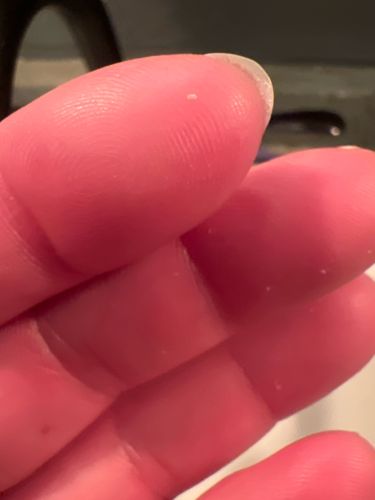Dust Mite (or similar small particulate)
Scientific Name: Dermatophagoides spp. (for dust mite, but exact identification is not possible from the image)
Order & Family: Acari (mites); Pyroglyphidae (dust mites)
Size: 0.2-0.3 mm (for dust mites)

Natural Habitat
This appears to be a very small particulate on a human finger. If it is a dust mite, they are cosmopolitan, found in human dwellings, especially in bedding, upholstered furniture, and carpets. They thrive in warm, humid conditions.
Diet & Feeding
Dust mites feed on shed human skin scales, fungi, and other microscopic organic detritus.
Behavior Patterns
Dust mites are microscopic and generally invisible to the naked eye. They do not bite or sting. They reproduce rapidly in favorable conditions. Their life cycle involves egg, larva, nymph, and adult stages.
Risks & Benefits
Dust mites are a common cause of allergies and asthma, due to their fecal pellets and body fragments. They pose no direct physical harm but can significantly impact respiratory health for sensitized individuals. There are no known benefits to humans or the ecosystem.
Identified on: 10/26/2025